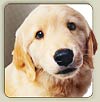What are the Dog Groups?
Dog breeds (purebred dogs only) are grouped into several "categories" depending upon common characteristics. These categories are called dog groups. Internationally these groups vary slightly by name. For example, in the UK, Sporting Dogs are referred to as the Gundog Group. The American Kennel Club recognizes seven Dog Groups, and and eighth, Miscellaneous Class. Each group has its own distinctive traits and features.
Hound Group
The hound encompasses the oldest and most diverse group of dogs, all of which share the common characteristic of hunting. Quite a mix of sizes, coats, and attitudes, these hounds were originally introduced to work independent of their owners, tracking, flushing out, and hunting animals.
This group may be broken down into two distinct categories. The long-legged, fast running sight hounds have been bred to use their stamina and exceptional eye sight to run down their quarry. Breeds in this category include the Greyhound, Afghan, and Salukis. The scent hounds, although varying in size and often slower, are great athletes and use their acute sense of smell and strong legs to follow the trail of prey. This category includes Bloodhounds, Beagles, and Bassets.
Friendly companions, hound dogs can be loyal, loving and relatively obedient. Some hounds, like the Beagle, are excellent with children, as well as other dogs. Typically, hounds do not guard property or people very well. These active dogs need a significant amount of exercise, but are probably best suited in an enclosed area. If unleashed, they may bolt, and will likely completely ignore your call to return. Some hounds share the unique ability to produce a loud baying voice, a behavior not likely to change, even with training.
Sporting Group
Energetic and vigilant, the sporting breeds are natural hunters, primarily of game birds. With highly developed sight and smell, and generations of selective breeding, these medium or large sized ‘gun dogs’ have evolved into excellent co-hunters to their masters. Examples of this group include the Golden Retriever, German Shorthaired-Pointer, Brittany, and American Cocker Spaniel.
Retriever, spaniel, setter, and pointer breeds make up sporting group. Using different techniques and skill sets, each of these dogs make use of air scent to hunt, converse to hound dogs, which hunt by following ground scent. The pointing or setting breeds are the locators of game, and will freeze and point to game, which directs the hunter to the location. The movers of game are the spaniels, which flush out the quarry, allowing the hunter to shoot it. Retrievers are the collectors of fallen game, spotting and remembering the location of fallen game, and carrying it over land and through water, back to the hunter.
Toy Group
The Toy group contains most of the smallest canines, and is simply described by the size of the dog. Though many in this group are quite ancient breeds, like the Pekingese and Pug, most are smaller versions of dogs belonging to other groups, created by man over generations of selective breeding. Examples include the English Toy Spaniel and Toy Fox Terrier. There are 21 different toy breeds in this poplar group.
With loads of character and love, these ‘teacups’ are very well suited as companion pets. Typically weighting under twelve pounds, toy breeds are ideal for city dwellers or those in small living spaces. With less shedding, eating, and messes, their overall care is equally minimized. Some toy dogs also make terrific watchdogs, including the Chihuahua, Toy Poodle, and ever alert, Shih Tzu. In most cases, trainability of this dog group is dependant on their specific breed. Some are quite easy to train, while others can be quite stubborn, tough, and yappy.
Although dainty, these energetic dogs are capable of taking long walks with their owners. However, given their fragility, these toy dogs are often at heightened risk of injury and bone damage. Without socialization, dogs in this group are not particularly fond of youngsters or other animals, and indeed smaller children may inadvertently cause injury. Dependant on breed, toy dogs can be more prone to health problems, though many of these problems can be avoided with a proper balanced diet.
Terrier Group
Generally described as feisty or fiery, Terrier breeds are best known for their distinctively spirited personality. Originating in the British Isles, these energetic dogs were bred to earn their keep by hunting game, and controlling rats, foxes, weasels, and mice, which raided a farmer’s crop or livestock.
Ranging from small to medium sized, terriers have either short or long-legged body types. The Scottish Terrier is an example of a short legged terrier, originally trained to go in underground burrows and dens in pursuit of smaller animals. Long-legged breeds, (Irish Terrier), were originally bred for digging after vermin. Coates types are typically wire, soft, (Soft Coated Wheaton Terrier), or smooth, (Bull Terrier). The Miniature Schnauzer and Wirehaired Fox Terrier are examples of wire-coated breeds, which have unique grooming needs.
As pets, Terriers can be friendly, stable, loyal companions, and make terrific watchdogs. They have little tolerance for other animals, including other canines, and therefore should have exclusive rights to their living environment. Their brave, tough, and tenacious temperaments are best left to the energetic, determined owner, as obedience training is very important. Terriers prefer lots of exercise, but can be adaptable to city environments. As family pets, terriers are prone to snap at overly excited children, though early socialization may help.
Herding Group
These highly social working breeds have been an important part of livestock industries for centuries. Herding, (or stock dogs), have the ability to control the movement of other animals using physical characteristics such us speed, agility, and endurance. There are approximately 60 recognized breeds of herding dogs, including Border Collie, Australian Shepherd, Old English Sheep Dog, Koolie, and Corgie breeds.
Though sensitive to the owner/handler, these guardians of livestock use their own judgment and initiative to maintain a balance of strength and gentleness with stubborn animals. Some breeds, such as the Corgie, leap and nip at the heels of the flock, (known as heelers), chasing them away from the handler. Other herding breeds like the Border Collie, get in front of the animal and stare it down, (known as headers), sending the stock towards the handler. Koolies have been know to combine both these herding methods to include jumping on back of the livestock.
A great choice for a family pet, these dogs are loyal, intelligent, and make terrific companions. Herding canines display an instinct to gather and herd, even in the absence of livestock, and will by design, herd family members, particularly children. They respond brilliantly to training, and indeed must be kept active with constant work and exercise.
Working Group
Dogs in the Working group, much like people, actually get great satisfaction from working for a living! Throughout history these breeds have been invaluable assets in helping their masters perform tasks such as herding, hauling, hunting, rescuing and guarding. They develop a tight bond with their owners and are intelligent and strong.
These dogs are often in the news or working for your local community as guard dogs, police dogs, sled dogs or search and rescue dogs.
Non-sporting Group
This group comprises "the rest." That is all breeds that don't fit into one of the above categories. This groups includes many sizes, variations and temperaments.
Miscellaneous Class
With hundreds of dog breeds in the world, the American Kennel Club only recognizes a small portion. When enough interest show in a particular breed that is not yet recognized by the AKC, it is entered into the Miscellaneous Class. When the breed shows dynamic growth in this category, it is then placed into one of the standard Dog Groups above.


